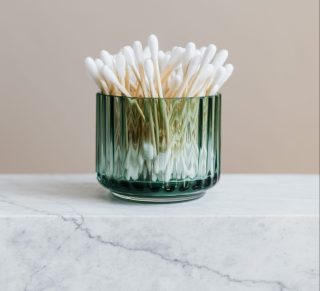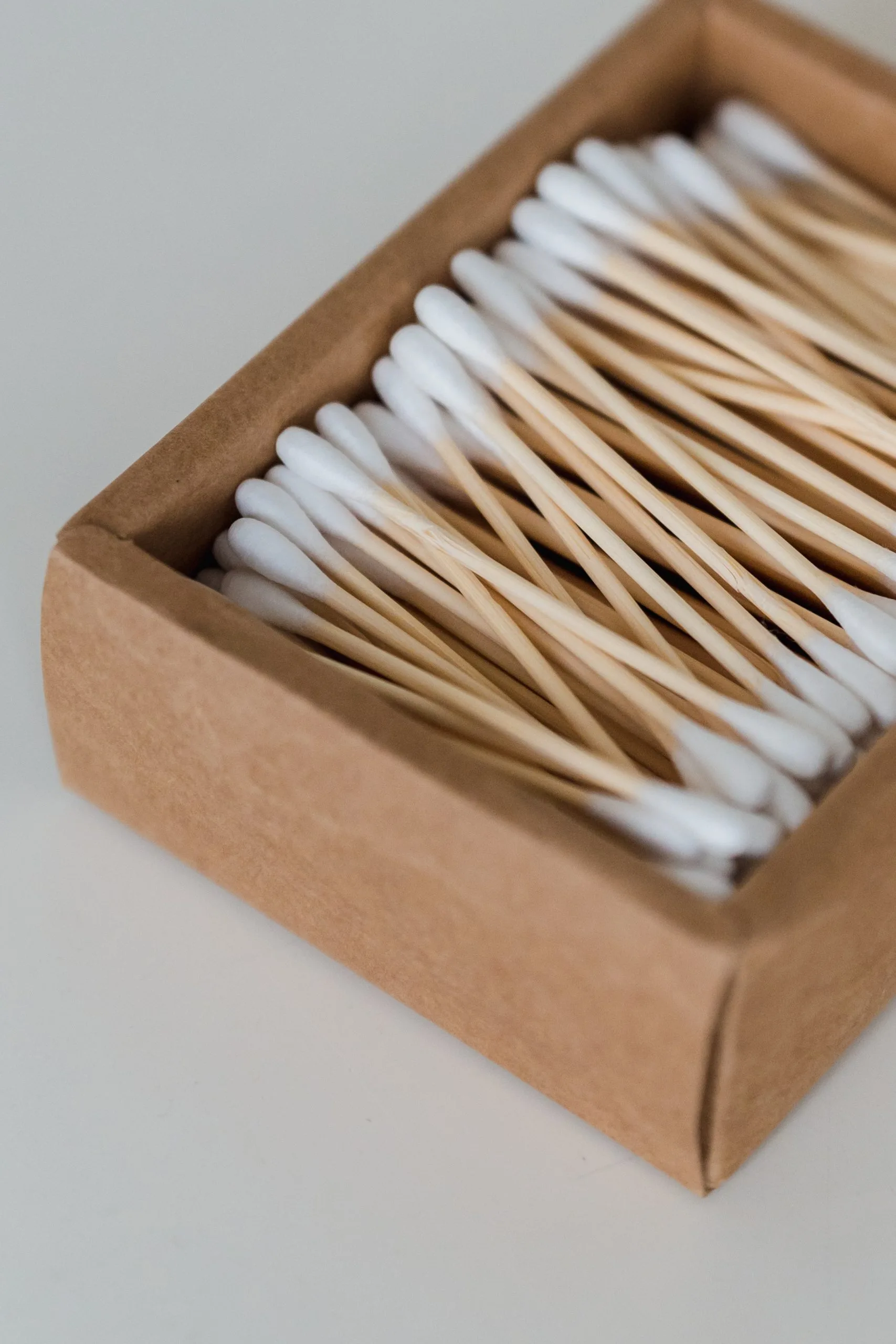Cotton swabs have become toiletry staples in most households. While they’re not designed for it, their most common use is the cleaning of the ear. Even though this is something doctors warn us against, many still reach for one to dig out any excess earwax or water that may be stuck inside the ear. This begs the question, are cotton swabs really dangerous for our ear health? Can they really cause any damage? If so, what other options do we have?
Cotton swabs are one of the most common methods of cleaning your ears. In fact, a study recorded that among 300 people, about 68% had admitted to using them, with 76% of these users using them on a weekly basis. While these haven’t been marketed as ear cleaners, this is their most common use. However, while it may be safe to clean the outside of your ear with this apparatus, healthcare professionals advise that we avoid using them to clean the inside of our ears.
Risks of Using Cotton Swabs
Using cotton swabs inside your ears can be quite dangerous, putting you at risk for severe ear damage. These risks include:
1. Earwax Blockage
Also known as cerumen impaction, this is the most common cause of conductive hearing loss. Earwax is a waxy substance that is secreted by the special lining inside your ear canals. This wax is responsible for not only protecting the tissue, but also helping to prevent infection due to trapped microorganisms, irritants, and dirt. It helps carry dead skin cells and debris out of your ears, which prevents your ears from drying out. As incredibly beneficial as it may be, too much of a good thing can be dangerous.
According to UCLA Health, earwax blockage affects about 10% of children and 5% of adults. Research has established that the use of cotton swabs inside your ear can increase your likelihood of being impacted by it. Common symptoms of it include:
- Hearing loss, which may worsen over time
- Pain in the ear
- An uncomfortable feeling of fullness in your ears
- Ringing in the ear
- Dizziness
- Coughing
- Itching of the ear canal.
2. Ruptured eardrum
A ruptured eardrum, also known as “tympanic membrane perforation”, is a hole or tear in the eardrum, the tissue that separates the ear canal from the middle ear. This thin tissue, also known as the tympanic membrane, resembles skin. As an incredibly vital part of body functioning, it is responsible for sensing vibrating sound waves and converting the vibration into nerve impulses that carry the sound to the brain. It also plays a role in protecting the middle ear from bacteria, water, and other foreign objects.
The study looked at cotton swab-related ear injuries in children. It was found that about 73% of ear injuries from cotton swabs were associated with ear cleaning. Another study that reviewed 80 cases of ruptured eardrums, found that a penetrating injury due to cotton swab cleaning were responsible for causing 44% of the cases. Symptoms typically include:
- Partial or complete hearing loss in the affected ear
- Ringing in the ear
- Bloody drainage from the ear
- Spinning sensations, which can lead to nausea and vomiting
- Sudden, sharp ear pain, or a sudden decrease in pain
3. Ear Infections
Swimmer’s ear, which is also known as otitis externa, is an inflammation or infection of the outer ear canal, which runs from your eardrum to the outside of your head. This may sound like an infection that is limited to water, but that couldn’t be any further from the truth. While it can be brought on by water remaining in your ear, studies show that it is most commonly caused by the misuse of cotton swabs.
When the skin in the ear gets scratched, a common occurrence with cotton swabs, germs can get into your ear canal, leading to an infection forming. Damage to this sensitive skin creates an opening for this infection. Mild symptoms include:
- Itching in the ear canal
- Drainage of clear, odorless fluid
- Slight redness inside the ear
Moderate progression is accompanied by:
- Increased pain in the ear
- Decreased hearing
- Intensified itching in the ear canal
Advanced progression is accompanied by:
- Severe pain that radiates to your head, face, or neck
- Complete blockage of the ear canal
- Fever
- Swelling of your neck’s lymph nodes

Photo by Karolina Grabowska from Pexels
So since experts say that cotton swabs are not ideal for cleaning your ears, what other options do you have? And should you even be attempting to clean your ears?
Ears, and Their Self-Cleaning Abilities
Surprisingly, your ears are very good at cleaning themselves, and they don’t need any extra help. The only reason you should be cleaning them is to soften and remove earwax from the outside of the ear canal. Remember, earwax is made in the outer section of the ear. This is why cotton swabs are dangerous, as they push the earwax deeper into your canal, thus blocking it.
Earwax has antibacterial properties, and acting as a filter for your ears, it blocks harmful particles from entering your ears. If, however, you feel like you are being affected by an earwax buildup, you can gently clean the outside of your ears with a washcloth. Follow this up by putting a few drops of baby oil, mineral oil, or glycerin in your ear to soften the wax. The most important thing to remember is to never place any object inside your ears. However, before you use any of these, you should consult your doctor first.
Consult Your Doctor First
If you’re experiencing any of the symptoms mentioned above, it is advised that you visit your doctor as soon as possible. While the issue could be due to earwax buildup, it could also be due to a more serious health condition that may require treatment. Self-diagnosis is extremely dangerous, so before embarking on these cleaning methods, ensure that you consult your doctor and get their stamp of approval. Ear health is extremely essential and should be prioritized.
Header Image by Greta Hoffman on Pexels
References
- Lee, J.S., Lee, S.M., Son, H.S., Yoon, Y.N., Shin, J.E., Sul, W.J., Yu, D., Choe, Y.B. and Lee, Y.W., 2022. Analysis of the Microbiome of the Ear Canal in Normal Individuals and Patients with Chronic Otitis Externa. Annals of Dermatology, 34(6), pp.461-471.
- Chartrand, M.S., Observations in Neurophysiology of the Outer Ear.



![women [longevity live]](https://longevitylive.com/wp-content/uploads/2020/01/photo-of-women-walking-down-the-street-1116984-100x100.jpg)










